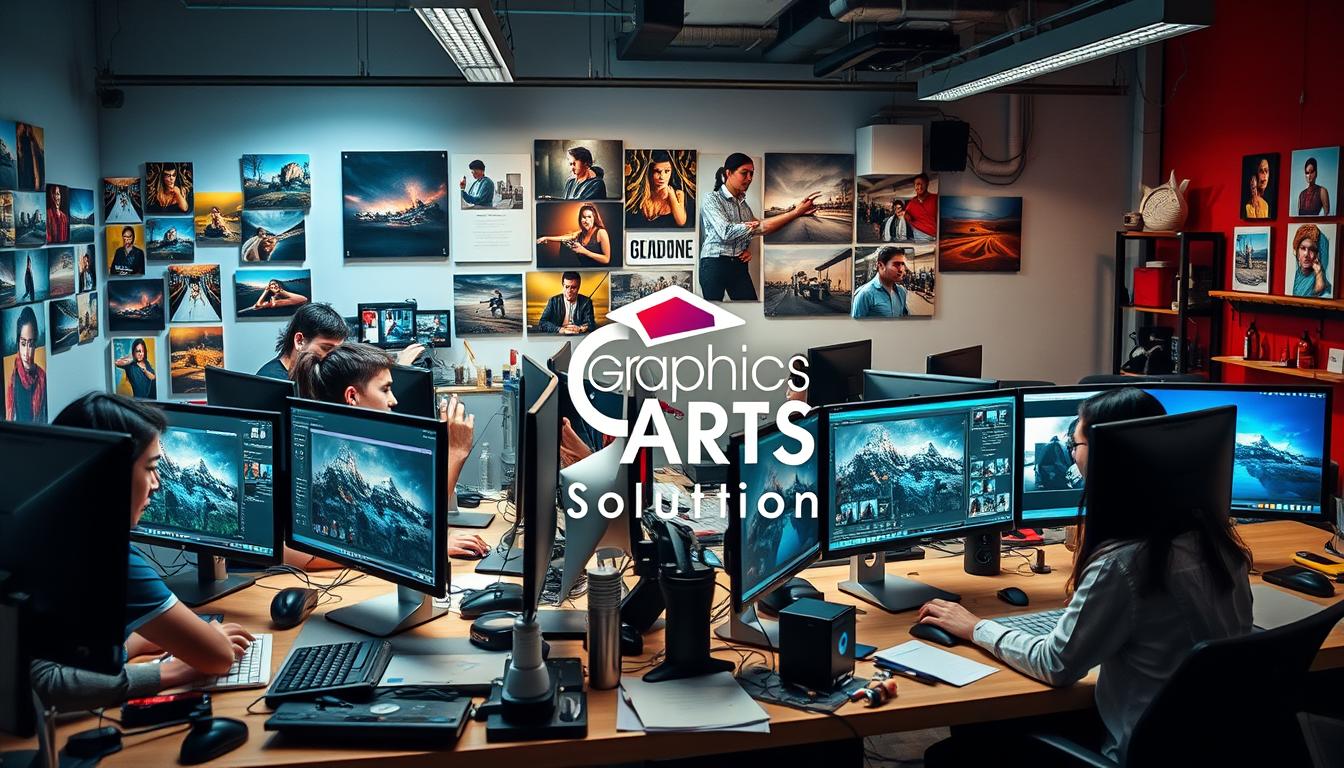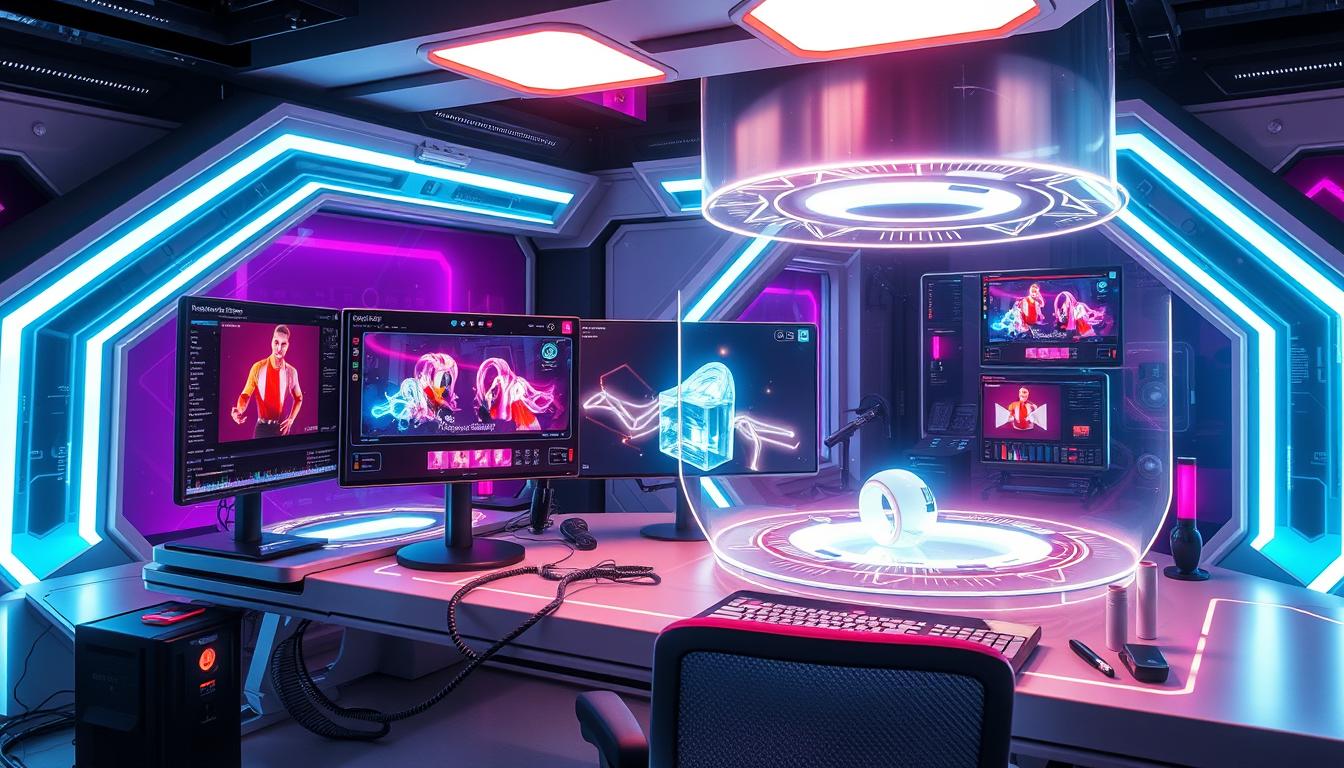In 2025, great visuals are way to grab people’s attention. Business photography is important to show off products and services. But, it’s not just about taking photos. It’s also about editing them to look perfect.
Companies have two main choices for photo editing. They can do it themselves or get help from outside experts. Both ways have good points and bad points, which we will talk about in this article.
Knowing the differences between these two ways is key for businesses. It helps them make smart choices about their pictures.
Current State of Photo Editing in Business
Photo editing technologies are changing how businesses make visual content. Today, businesses want to make their visuals better to grab their audience’s attention. They are looking for new ways to stand out.
Growing Demand for High-Quality Visual Content
Now more than ever, businesses need top-notch visual content. They use visual content to share their stories, show off products, and reach their audience. This move to visual marketing has made photo editing services more important than ever.
Good visuals are way for businesses to be noticed. They help with product images, real estate photos, and social media. The quality of these visuals affects how people see and interact with a brand.
Photo Editing Technologies and Workflows
The world of photo editing technologies has changed a lot. New software and hardware make editing easier and more precise. AI and machine learning have also made editing faster and more efficient.
New editing services have come up to meet different business needs. These services help businesses keep their visuals looking great. They offer everything from simple touch-ups to complex edits.
| Technology | Impact on Photo Editing | Business Benefit |
|---|---|---|
| AI-powered editing tools | Automated editing processes | Increased efficiency and reduced costs |
| Cloud-based platforms | Enhanced collaboration and scalability | Improved workflow management and flexibility |
| Advanced retouching software | High-quality image enhancement | Enhanced brand visuals and customer engagement |
Outsourcing vs In-House Editing: Differences
Knowing the difference between outsourcing and in-house photo editing is key. Companies must decide if they should outsource or have their own team. This choice affects the quality of visuals, how well the business runs, and its costs.
What Constitutes In-House Photo Editing?
In-house photo editing means doing all photo editing tasks by yourself. You need to hire a team, buy the right tools, and manage everything yourself.
Key aspects of in-house photo editing include:
- Hiring and training a team of photo editors
- Investing in photo editing software and hardware
- Managing the workflow and ensuring quality control
The table below shows important things to think about for in-house photo editing:
| Aspect | In-House Editing |
|---|---|
| Control | High level of control over the editing process |
| Cost | Initial investment in software, hardware, and personnel |
| Quality | Quality can be maintained as per company standards |
What Does Photo Editing Outsourcing Involve?
Outsourcing photo editing means hiring someone else to do it for you. This can be simple edits or complex changes.
Outsourcing process typically involves:
- Selecting a reliable outsourcing partner
- Defining the scope of work and service level agreements
- Managing the workflow and communication with the outsourcing team
Outsourcing is flexible and can grow with your business. It lets you change without big internal changes.
Financial Perspective: Cost Analysis
Businesses often face a big choice: to edit photos in-house or outsource. Looking closely at the costs helps make a smart choice that fits the company’s money goals.
In-House Editing: Initial Investment and Ongoing Costs
Having a team for photo editing costs a lot at first. You need to pay for skilled editors, buy top software, and get good computers. The cost for software like Adobe Photoshop can be very high, either as a one-time payment or through monthly fees.
After the first cost, there are ongoing expenses. These include paying the editing team, giving them benefits, and training them. You also need to spend money on keeping your computers and software up-to-date.
Outsourcing: Pricing Models and Long-Term Financial Impact
Outsourcing photo editing has its own money side. There are many ways to pay, like per photo, in bulk, or by subscription. This lets businesses pick what works best for their budget and needs.
Outsourcing can save a lot of money in the long run. It means you don’t have to spend a lot on starting up. You also don’t have to keep paying for salaries, training, and fixing equipment.
When thinking about money, businesses need to look at their specific needs and budget. A careful cost check will show if editing photos in-house or outsourcing is better for saving money.
Quality Considerations: Who Delivers Better Results?
Companies are deciding between expertise of outsourced professionals and in-house teams. They look at expertise, brand consistency, and control over editing. These factors are key to quality photo editing.
Expertise and Specialization in Outsourced Services
Outsourced photo editing services have a lot of specialization. They use experts with the latest skills and software. This can lead to better edits than in-house teams, who might not have the same skills.
For example, outsourced services can do advanced retouching and HDR imaging. They need a lot of skill for these tasks. Here’s a table showing differences in expertise between outsourced and in-house teams.
| Aspect | Outsourced Services | In-House Teams |
|---|---|---|
| Expertise Level | Highly specialized professionals | Varies based on team composition |
| Training and Updates | Regular training on latest trends and software | Dependent on company investment in training |
| Range of Services | Wide range of services including advanced retouching and HDR imaging | Limited by the skills of the in-house team |
Control and Brand Consistency with In-House Teams
In-house teams give businesses a lot of control over editing. This helps keep brand consistency in all visual content. They can adjust edits quickly to meet company standards.
Having an in-house team also helps with communication. It lowers the chance of misinterpreting what the client wants. This is important for companies that value their brand identity.

In conclusion, both outsourced services and in-house teams have their benefits. Companies need to think about expertise and specialization versus control and brand consistency. This will help them decide what’s best for their photo editing needs.
Time Efficiency and Turnaround Factors
Time is very important in photo editing services. Businesses need to work fast to meet deadlines and keep quality high. This part talks about how in-house teams and outsourcing do in these areas.
Meeting Deadlines with In-House Teams
In-house teams can control editing directly, which might make things faster for small projects. They can watch progress closely and adjust as needed. But, they might struggle with big projects or sudden needs, causing delays.
Businesses can use good project management tools to help. This makes editing faster and more efficient. They can also train their team to work better, saving time on each project.
Scalability and Volume Management with Outsourcing
Outsourcing is great for handling lots of projects and changing needs. Service providers can grow or shrink quickly to meet demand. This is good for businesses with changing workloads or wanting to grow their photos.
Working with an outsourcing service helps manage work well. It ensures photos are delivered on time and are of high quality. Outsourcing also lets businesses take on big projects without needing more staff or equipment, making things faster and more flexible.
Security and Communication Challenges
Companies face big challenges when they deal with photo editing. They must think about keeping information safe and talking clearly. This is not just about getting things done right or saving money.
Data Security and Intellectual Property Concerns
When you outsource photo editing, you might face data security risks. This is because the team you hire might not follow the same safety rules. It’s very important to make sure your partner is careful with your intellectual property.
They should use safe ways to send files and sign agreements that keep secrets. To stay safe, check your partner’s safety plans and how they handle private info.
Overcoming Communication Barriers with External Teams
Good talking is key to a great outsourcing deal. But, communication barriers can pop up. These can be because of time zones, languages, or not being able to watch over things directly.
Start with clear ways to talk and work together. Have regular meetings, give clear instructions, and use tools to manage projects. This helps everyone stay on the same page and avoids mistakes.
Industry-Specific Applications
Photo editing is key in many fields like e-commerce, real estate, wedding photography, and fashion. Each field has its own needs and challenges in photo editing.
E-commerce and Product Photography
In e-commerce, great product images draw in customers. Photo editing makes these images better by removing backgrounds and adjusting lights. E-commerce businesses use it for consistent branding and to show products from all sides.
Real Estate Photography Editing
Real estate photo editing makes property images more appealing. It involves fixing brightness, contrast, and removing unwanted stuff. Real estate agents use these edited photos to show properties in the best way, online and in ads.
Fashion and Commercial Photography
Fashion photo editing makes images glamorous and eye-catching. Editors work on skin tones, clothes, and accessories for perfect visuals. Fashion brands count on these edited photos for ads and editorial content.
Photo editing services can be customized for each industry. This leads to high-quality images that boost the brand’s look.
Transitioning Between Models: How to Make the Switch
As businesses grow, they often need to change how they edit photos. They might choose to do it themselves or hire someone else. This choice is big and needs careful thought.
From In-House to Outsourced: Steps for a Smooth Transition
Switching from doing photos yourself to hiring someone else can be tough. But, with a good plan, it can go well. First, look at how you do things now and see what can be better with help.
Then, pick a good partner to help you. Look at their work, what others say, and what they can do.
It’s also key to talk well with your new partner. Set up regular meetings and use tools to work together smoothly. Make sure everyone knows what to do and what to expect.
| Transition Steps | Description |
|---|---|
| Assess Current Workflow | Identify areas for improvement |
| Select Outsourcing Partner | Evaluate portfolio and services |
| Establish Communication Channels | Regular check-ins and project management tools |
Building an In-House Team After Outsourcing
If you’ve been using someone else for photo editing and want to do it yourself, there’s a plan. First, think about why you want to do it yourself. Is it to save money, get better quality, or fit your business better?
Next, find people who are good at editing photos. Look for those with the right skills and experience. Then, make sure you have what they need to do a great job.

Conclusion: Making the Right Choice for Your Business
Choosing between outsourcing and in-house photo editing is a big decision. It affects your company’s look, how well things run, and your profits. We’ve looked at the main differences, like money, quality, and how fast things get done.
When planning your photo editing strategy, think about what’s best for your business. Look at the skills needed, how many pictures you’ll edit, and if you need to grow or change quickly.
By thinking about these things, you can choose wisely. This choice should help your business look better and succeed. Whether you choose to outsource or do it yourself, pick what’s best for your company.
FAQ
What are the main differences between outsourcing photo editing and having an in-house team?
Outsourcing means hiring others to edit your photos. Having an in-house team means you hire your own staff. The big differences are cost, quality, control, and how easy it is to grow.
How do I determine whether outsourcing or in-house editing is more cost-effective for my business?
Think about how much editing you need, the cost of hiring staff, and what outsourcing services charge. Doing a cost comparison will help you decide.
Can outsourcing photo editing compromise the quality of my visual content?
No, it doesn’t have to. Many outsourcing services offer top-notch photo editing. Just pick a reputable service that meets your quality needs.
How can I ensure data security when outsourcing photo editing?
Look for services with strong security like encryption and secure file transfers. Tell them about your security needs and expectations.
What are the benefits of having an in-house photo editing team?
An in-house team gives you more control and faster service. They also help keep your brand’s look consistent. Plus, they get to know your brand well.
Can I switch from in-house editing to outsourcing or vice versa?
Yes, switching is possible. But plan it well to avoid problems. Think about training, adjusting workflows, and talking to others involved.
How do I choose the right outsourcing service for my photo editing needs?
Look at different services, check their work, and see if they know your industry. Also, consider their prices, how fast they work, and their customer support.
What are the industry-specific applications of photo editing?
Photo editing is used in many areas like e-commerce, real estate, weddings, and fashion. Each field needs its own special touch and attention.
How can I ensure that my outsourced photo editing service understands my brand’s visual identity?
Give them clear guidelines and examples of your brand’s style. Talk about what you expect and check their work often. This keeps things consistent.





